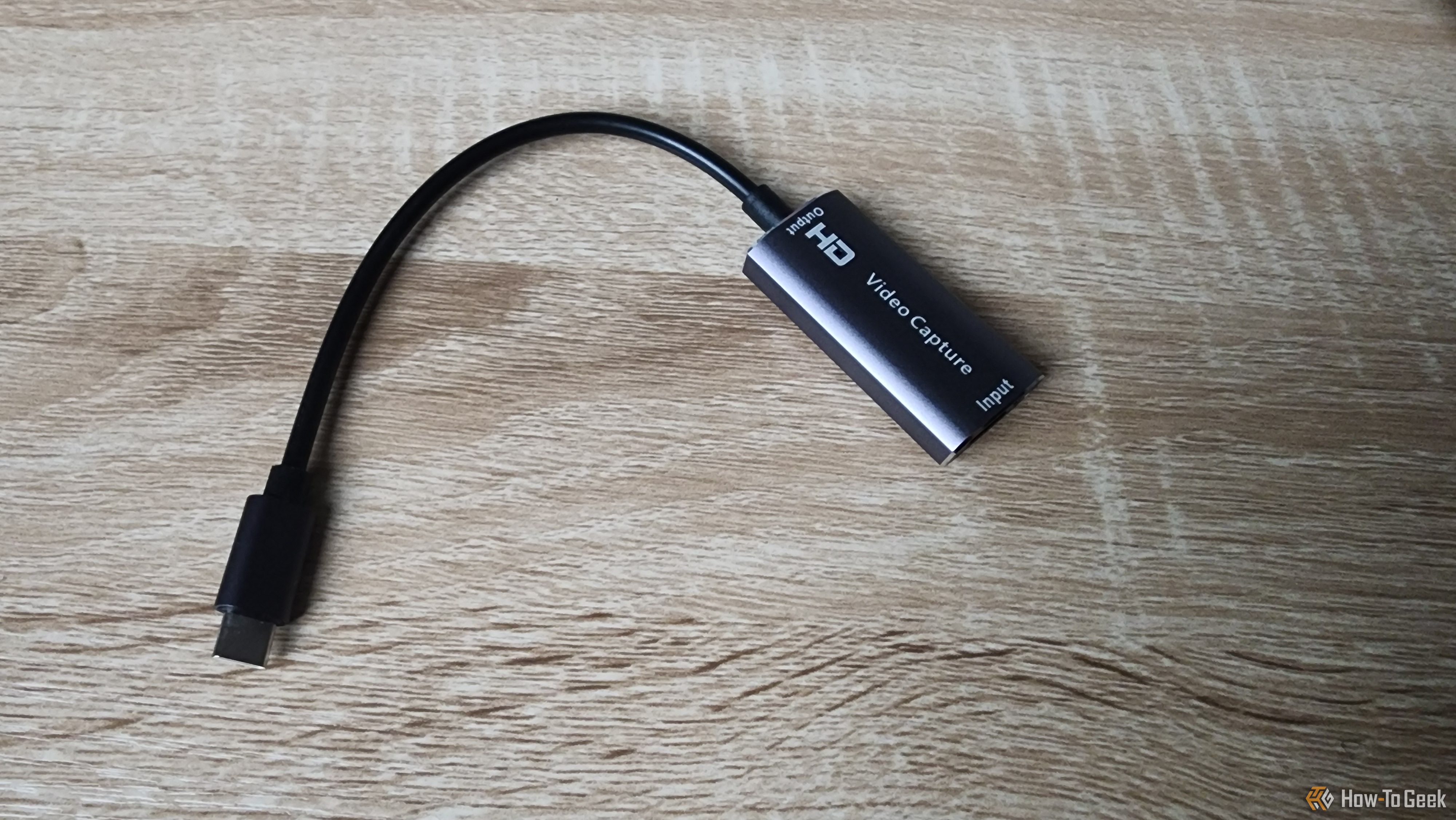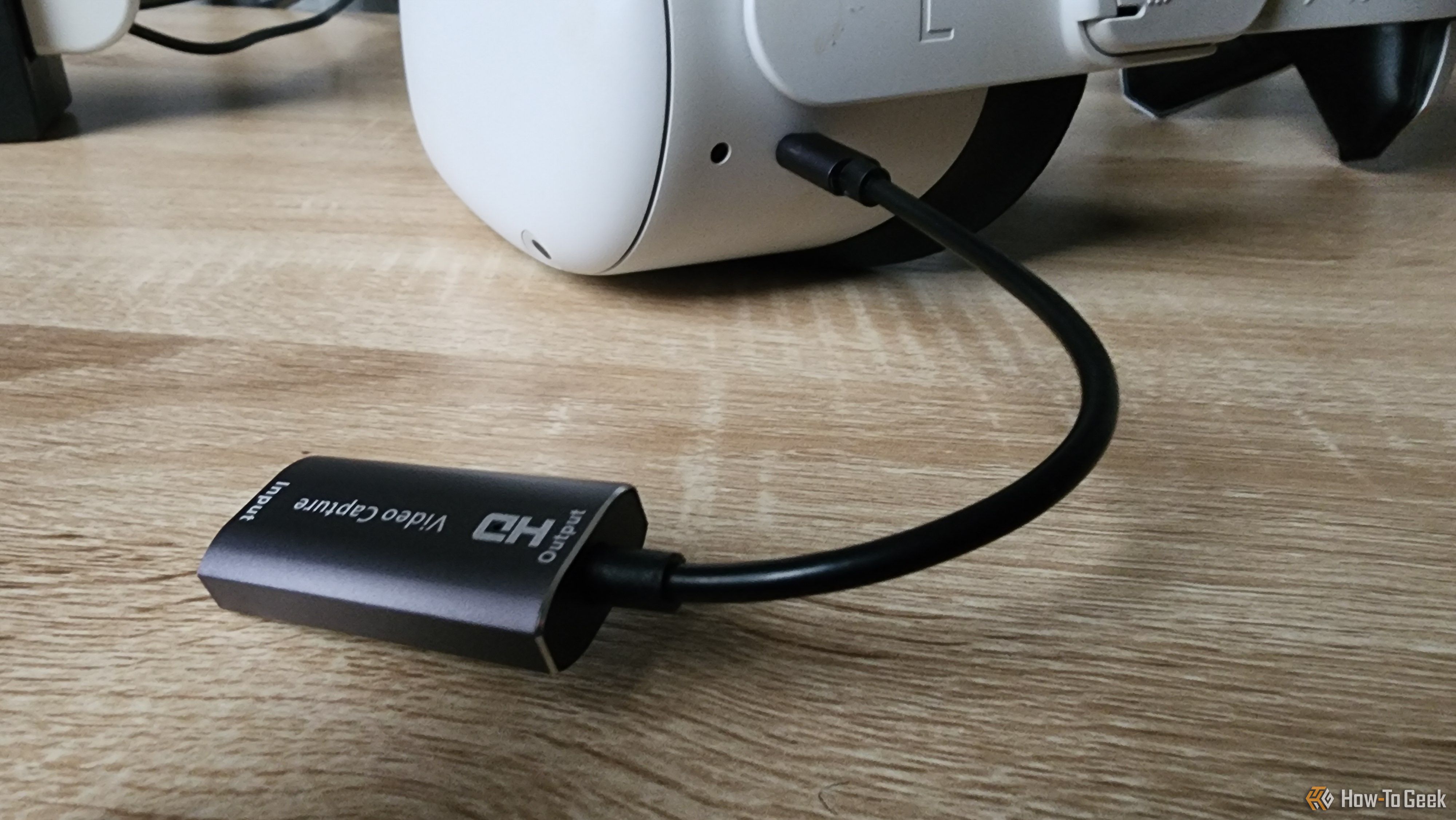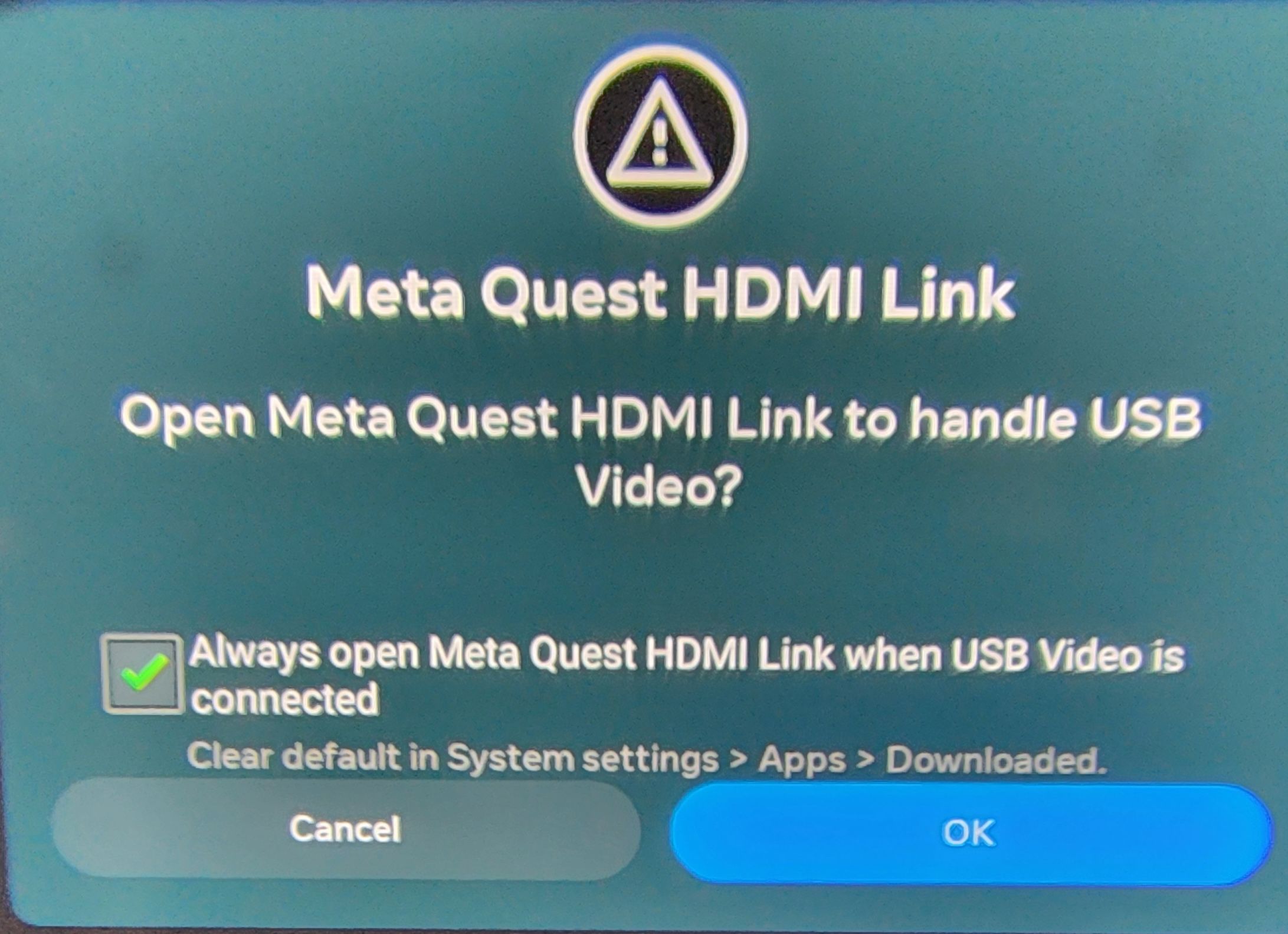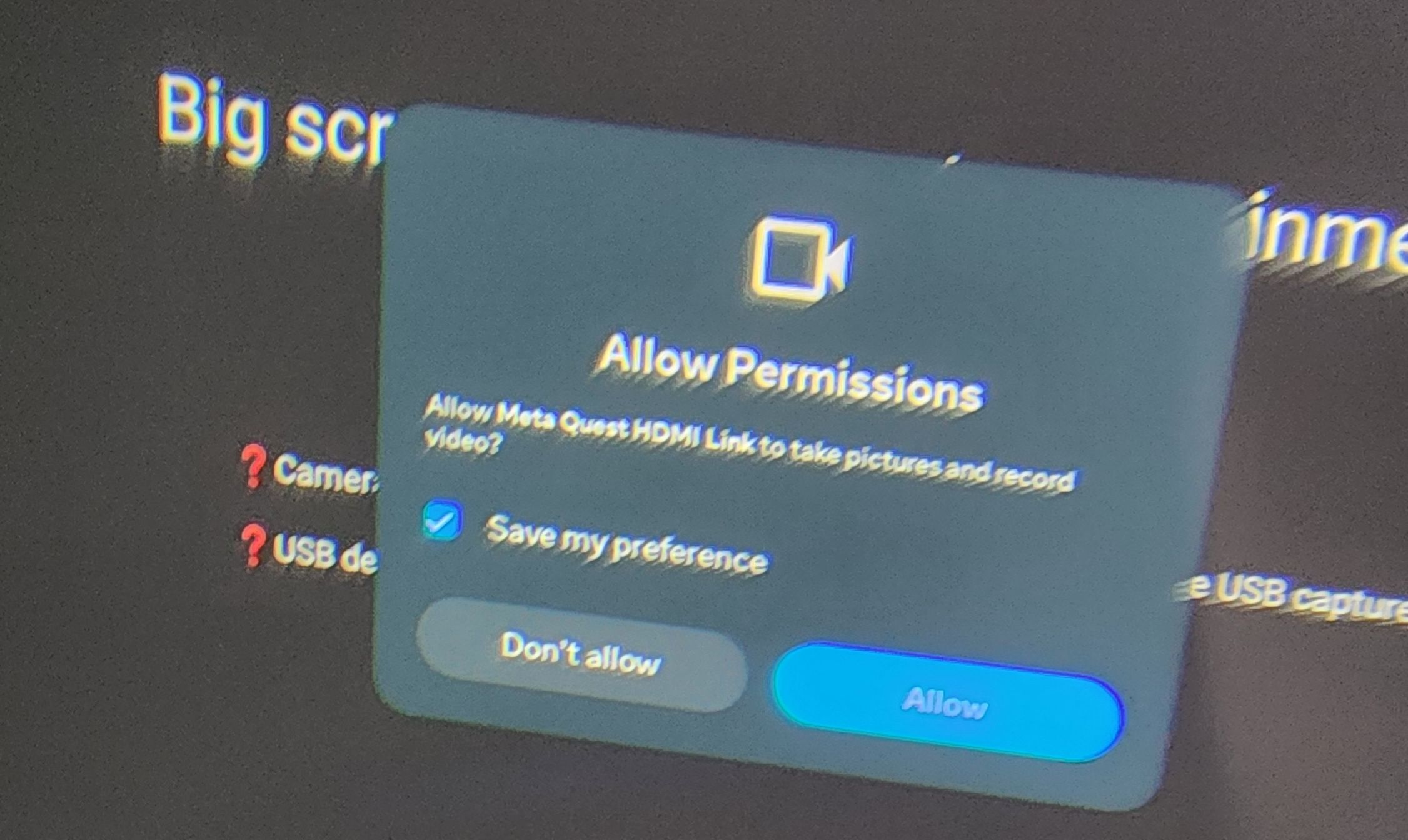Key Takeaways
- Quest HDMI Link lets you connect devices to VR headsets with 1080p support.
- You’ll need the HDMI Link app, a UVC/UAC card, HDMI cable, and possibly a power cable.
- Plug in the card, grant permissions, and enjoy virtual screen for gaming and more.
The Meta Quest family of headsets are incredibly versatile, and Meta keeps adding features to them, but their new HDMI Link feature is one of the coolest I’ve seen. I’ve always enjoyed watching movies or playing 2D games in VR, but wirelessly streaming games has never worked well. Now you can literally plug your video output into the Quest, with some help.
The New Quest HDMI Link Feature
HDMI Link lets you connect an HDMI or DisplayPort device to your Quest 2, Quest 3, or Quest Pro. When you connect your source device to your headset, you’ll see a screen appear in virtual space. You can move and resize the screen as needed. The latency is very low, and you likely won’t notice any. So it’s perfect for applications like games. The maximum resolution that’s supported is 1080p, but that’s pretty much the highest resolution the headset can reproduce, and that’s also the limit for playing non-VR games on the PS VR2. Which has much higher resolution screens.
What You Need
In order to get HDMI Link to work, you need a few things, including some extra hardware:
- The HDMI Link app is installed on your Quest.
- A UVC and UAC compatible capture card.
- An HDMI or DisplayPort cable, depending on what your capture card uses and what your source device is.
You may also need an additional power cable if you have the type of capture card that needs external power. If you want your Quest to stay charged, you may want to use a capture card that has power passthrough.
Setting It Up
Let’s go over the steps of how to get it working. I’m going to use a cheap no-name 4K capture card I bought from a local computer store for $15. As long as it says it’s UVC and UAC compliant, it should work, so don’t spend a lot of money!
I’m using my Nintendo Switch, docked using a normal HDMI to HDMI cable. Sadly, the Switch does not support USB video output in handheld mode, but handhelds like the ROG Ally do.
After installing the HDMI Link app, plug our capture card into the headset. In this case mine is USB-C, but you may need to use a USB-A to USB-C adapter if your capture card uses USB-A.
Next, plug the HDMI cable into the card, and put on your headset. You’ll see a basic setup screen where you can choose to activate the app automatically as soon as you plug in the capture card. Select “OK” after making your choice.
Grant any permissions, and you should be good to go.
If you get terrible frame rates at first like I did, make sure you have updated to the latest system software version! The HDMI Link app will install and run even if you haven’t.
Once you’re running in the headset, you can switch between passthrough and your VR home environment by tapping the side of the headset twice. You can tap the screen with your virtual finger to see your current stats, such as the input resolution and current frame rate.
I have to say, the virtual screen looks really good! I can definitely see myself playing some Switch games this way.
Cool Uses for HDMI Link
I’ve always liked using my desktop in VR, in a full environment, but with HDMI Link you now have the option of plugging your laptop into your headset and seeing a virtual screen. You should have the option to choose only to output to the headset, and if you’re in passthrough mode you can see your mouse and keyboard clearly. This is also a fantastic way to connect your smartphone, especially if you have a phone with a desktop mode like Samsung Dex.
It feels like the sky’s the limit, and I just found a whole new reason to always keep my Quest VR close at hand. I can’t wait to see what they come up with next!








